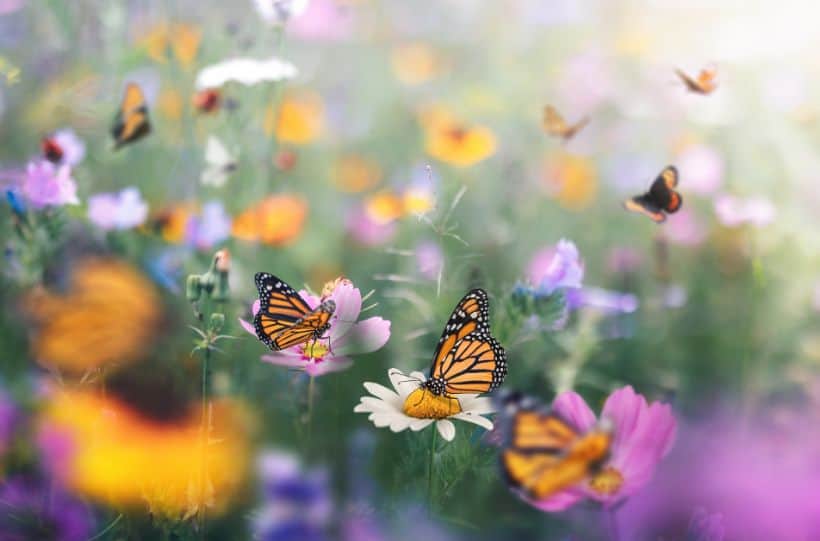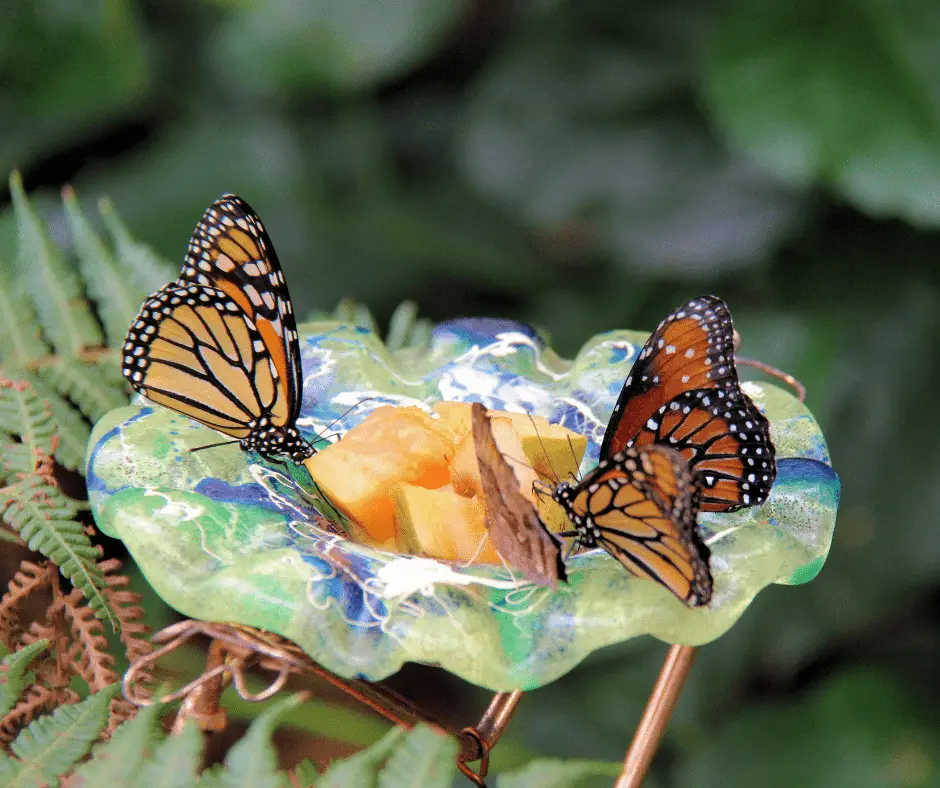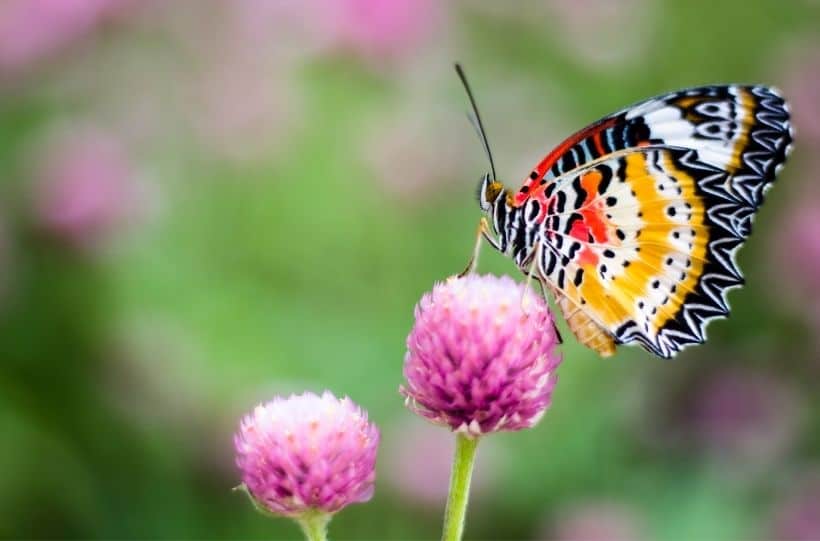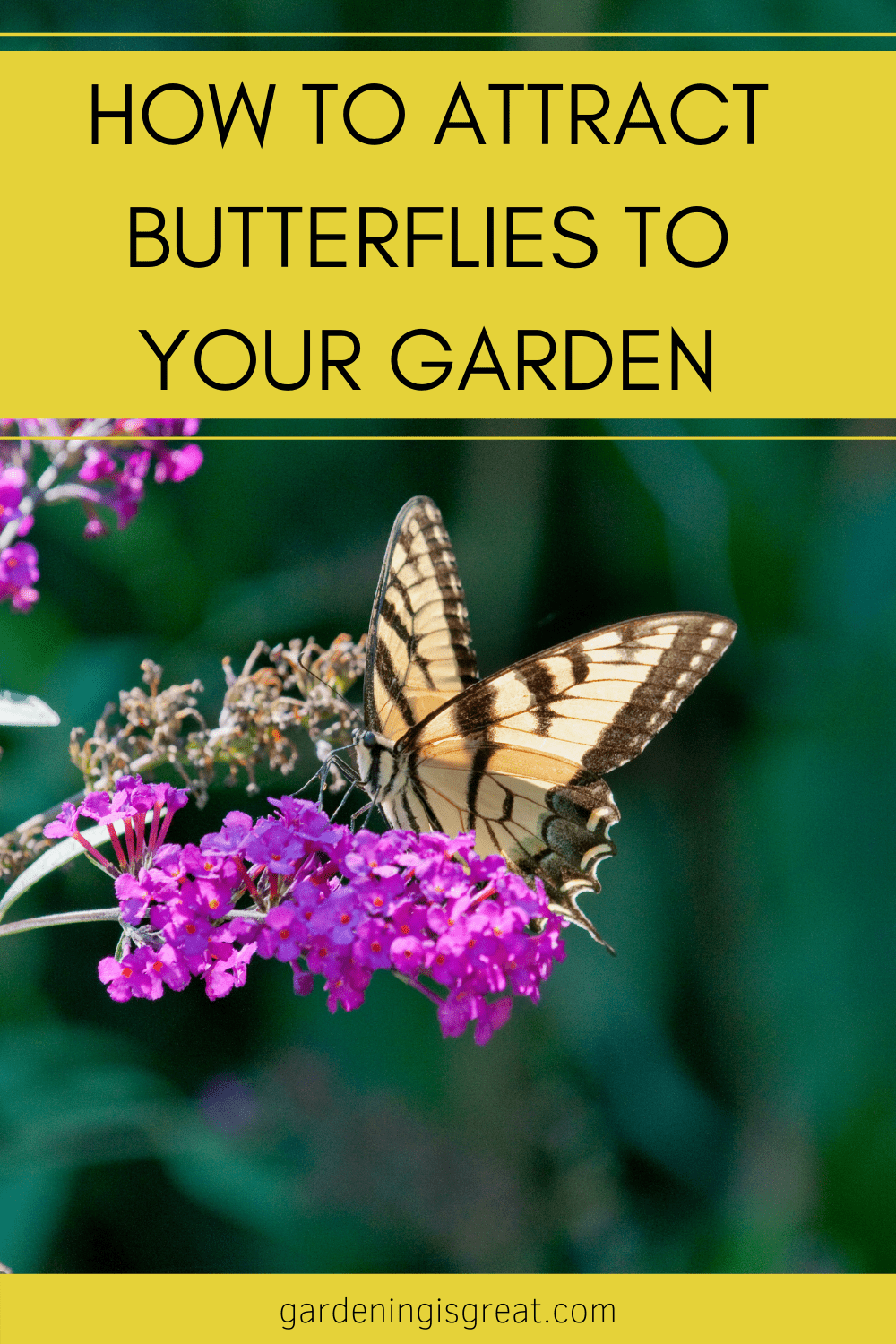How to Attract Butterflies To Your Garden
Bring the magic of butterflies to your garden! Create a safe haven offering them food and shelter, and these fluttering beauties return the favor by pollinating your plants and crops. Turn your garden into a butterfly paradise!

Butterflies in the garden bring so much joy. You might think it’s due to the intricate details on their wings or their delicate flutters. But for a gardener, butterflies visiting their garden is a good indication of a healthy garden.
Attracting butterflies to your garden is beneficial to butterflies by providing them with food and shelter, but it also benefits your plant’s growth.
As they feed, butterflies spread pollen from plant to plant. This helps fertilize your plants and is especially beneficial if you are growing crops such as fruit and vegetables.
Now you know that butterflies in your garden are extremely beneficial, how do you go about attracting them? Here are 7 ideas teaching you how to attract butterflies to your garden:
Choosing the Right Flowers
Butterflies primarily feed on nectar and rely on this source of food to give them energy and survive. Planting a range of nectar-rich flowers will help attract butterflies to your garden.
Ensuring that you have a variety of flowers that bloom to coincide with a butterfly’s life cycle helps butterflies to have enough food throughout the spring and summer months.
Here is a list of nectar-rich plants to help attract butterflies to your garden and support them with a supply of food:
- Buddleia
- Lavender
- Marigolds
- Bowles Mauve Wallflower
- Majoram
Ideally, choose a range of flowers that have overlapping blooming periods throughout the spring and summer months. This helps to provide a consistent supply of food for butterflies visiting your garden.
Warmth and Sunshine
If you want to attract butterflies to your garden, it is best to place flowers in areas that receive lots of sunshine and warmth.
Butterflies are extremely delicate and sensitive to changes in the weather and they thrive in areas of sunshine that create a warm environment.
Did you know that butterflies are cold-blooded?!
This means they are unable to generate heat from their own body and rely on the sunshine for warmth.
By providing nectar-rich plants in sunny areas, you offer not only food but also a place for butterflies to rest safely as their bodies warm up as they bask in the sunshine.
Butterfly Feeder
A butterfly feeder is a great way to attract butterflies to your garden. Sometimes, butterflies need that extra support, which a butterfly feeder can provide.
Placing your butterfly feeder in a sunny spot of your garden offers butterflies a warm, sunny spot where they can gain heat from the sun. It is a good idea to leave food and water for butterflies also in addition to planting a range of flowers in your garden.
Butterflies need water to survive, not just nectar. So, leave out fresh water and change it daily to avoid attracting unwanted pests.
For food, butterflies can also gain energy from fermenting fruits. They can eat the juice from the fruit just as they would collect nectar from flowers.
A good butterfly feeder has a wide, flat base for butterflies to land on as well as for you to lay out food for them. It also needs to be strong so that it holds up well if there is a little bit of wind and won’t break, causing potential harm to resting butterflies.

Available Space
Even if you don’t have a big garden, you can still maximize the space available to you to attract butterflies.
For example, if you have a small yard, you can use butterfly feeders or plant nectar-rich flowers in hanging baskets, window boxes, or even patio pots.
Butterflies do not need huge gardens to survive. With a sunny, warm environment and plenty of food, your garden will be a safe space for butterflies to rest and feed.
Avoid Chemicals
Synthetic fertilizers and pesticides are readily available and easily used in gardens. But, they cause more harm than good, especially for pollinators such as butterflies.
Chemicals found in these products can
- kill the soil and microorganisms found in the soil,
- Cause unnatural growth in plants, making them susceptible to disease and pests
- Kill pollinators and beneficial bugs that visit your garden.
Instead, try to use chemical-free or organic products in your garden. These will help support your plants to grow naturally whilst not harming the environment and animals around them.
Limit Weeding
This tip can be a bit tricky for a gardener to implement. It is natural for you to want to pull out weeds and keep your lawn neat and tidy.
But plants such as grasses, thistles, and nettles are vital for caterpillars. Without taking care of caterpillars, you then can’t take care of butterflies.
Caterpillars feed on these plants and use them for protection from predators as they grow. Offering a section of your garden that is allowed to grow naturally in the spring and summer months will help your local butterfly population to grow.
Do Your Research
Different butterflies live in varying areas around the world. If you want to attract butterflies to your garden, it is important to research the local butterfly species found in your area.
Each species of butterfly may have a diet preference, which would lead you to plant specific flowers in your garden to attract the local butterflies.
For example, orange-tip butterflies are found throughout the UK bar in the north of Scotland. They often lay their eggs on cuckooflower, garlic mustard, and hedge mustard plants as their caterpillars love to eat them and thrive in areas where these plants grow in abundance.
Whereas, small skipper butterflies are distributed only across England and Wales. They choose to lay their eggs on long grasses such as Yorkshire-fog as their caterpillars eat this plant almost exclusively.
Spending time researching and establishing which species of butterfly are local to you ensures you can have the right plants growing in your garden to attract them.
FAQs
Do butterflies need water?
Yes, butterflies need water as well as nectar from flowers to survive. Make sure to leave out fresh water for them daily.
Why is it important to limit weeding in my garden?
Some plants that are often considered weeds are essential for caterpillars, which eventually turn into butterflies. By allowing these plants to grow in your garden, you are creating a safe space for butterflies (and other wildlife) to thrive.
How can I find out which butterfly species are native to my area?
Possibly in books or online, but you could even try a local gardening center for this information.

Butterflies are amazing insects that benefit plants. By using some of these tips, you can attract butterflies to your garden to help the species and your flowers.
They are extremely sensitive to changes in the weather and their habitat. Much of their natural habitat has been destroyed for farming and construction. Hence, butterflies are endangered and need help from gardeners like you.
You can attract butterflies to your garden by providing a safe space, food, and shelter to support their survival. In return, butterflies will help spread pollen between your flowers and encourage the fertilization of your plants and crops.
If you want to learn how to encourage more pollinators into your garden, be sure to read the following posts:
- How to Create a Pollinator-Friendly Garden
- 47 Plants That Attract Bees To Your Garden
- A Companion Plant Guide: Using Companion Plants to Attract Pollinators
- How To Attract Birds To Your Garden
- How To Attract Wildlife To Your Garden


